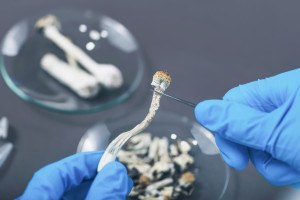Top Docs Q&A: Michael Holick
This post is part of our Top Docs Q&A series where we ask a physician who was selected as one of our Top Docs questions about their field, life as a doctor, and practicing in the Greater Boston area.
Name: Michael Holick
Hospital Affiliation: Boston Medical Center
Title: Professor of medicine, physiology, and biophysics at Boston University School of Medicine
Field: Endocrinology, diabetes, and nutrition
Speciality: Vitamin D
Michael Holick is an endocrinologist at Boston Medical Center and a leading expert in vitamin D research. His work suggests that vitamin D deficiency may be one of the most widespread pandemics worldwide and, in part, responsible for a range of health problems. He is the author of several books, including, The Vitamin D Solution: A 3-Step Strategy to Cure our Most Common Health Problems.
Why did you choose the field of endocrinology and vitamin D?
Back in 1969, I was a graduate student in the biochemistry department at the University of Wisconsin. When it came time to pick a mentor, I was sent over to a doctor who was researching vitamin D because there were few openings elsewhere. At the time, nobody cared about vitamin D, and I could not think of a more boring subject. As it turns out, it’s now considered kind of the Holy Grail for human health in many ways. After completing my medical training at Massachusetts General Hospital, it then made sense to become an endocrinologist because of my work in vitamin D.
How has this field of vitamin D Research changed over the time you’ve been practicing?
I’ve been in the field for 40 years now, and I’ve watched it grow in leaps and bounds. Before 2004, most people, including health care professionals, thought that if you have a healthy diet then you are getting all the vitamin D you need. Now it is estimated that upwards of 30 to 50 percent of children worldwide are at risk of vitamin D deficiency. We recognize that essentially every cell in your body has a vitamin D receptor. There are also now thousands of studies that associate vitamin D deficiency with increased risk of many chronic illnesses including: heart disease, diabetes, rheumatoid arthritis, multiple sclerosis, infectious diseases, Alzheimer’s disease, and some deadly cancers such as colon, prostate, and breast.
What do you hope to see for the future of vitamin D research?
I think what’s most important is that people realize that essentially everyone is at a high risk of vitamin D deficiency. We encourage children to take 600 to 1,000 units of vitamin D a day. For adults we recommend a minimum of 1,500 to 2,000 units a day.
What are the latest advancements happening in this field?
There are some major studies underway like one out of Boston called the VITAL Study. Researchers are giving 2,000 units of vitamin D to healthy adults [over 50-years-old] and then they follow the subjects’ risk of cancer, cardiovascular disease, fracture, and mental health. Hopefully the study will be able to provide unequivocal evidence that improving your vitamin D status is important to your overall health and wellbeing.
What have you discovered so far?
I identified the major circulating form of vitamin D and later the active form of vitamin D made by your kidneys. I was also part of the group that was first to chemically make the active form of vitamin D, which was given to patients that were wheelchair-bound because their kidneys couldn’t activate vitamin D. It improved their bone health so much that they actually started to walk again. In the mid-80s, I introduced the concept of using activated vitamin D for psoriasis, and it’s now the treatment of choice for patients with mild psoriasis.
Why is keeping vitamin D levels in a healthy range so important in the winter?
In the winter people are at an extremely high risk of vitamin D deficiency. They often have aches and pains in their muscles and have stiff joints when they get up in the morning. Many of these patients are misdiagnosed as having fibromyalgia, chronic fatigue syndrome, or depression, but these are classic symptoms for vitamin D deficiency. Patients who take vitamin D [supplements] have found dramatic improvements.
Can we get more vitamin D through our food?
So the problem is that there is very little vitamin D in your diet. There are around 100 units in a glass of milk and about 500 to 1,000 units of vitamin D in wild sockeye salmon and cod liver oil. The other exception now is mushrooms that are exposed to ultra violet light.
How can vitamin D affect mental health?
There’s evidence that if you give vitamin D to D-deficient rats, then you improve the serotonin levels in their brain. We know that people feel better when they are exposed to sunlight, and we think it may be in part due to the vitamin D effect on the brain.
Why is vitamin D so crucial to preventing serious diseases like autoimmune diseases, cancers, and heart disease?
We know that active vitamin D modulates your immune system, and we think it helps fight infections and prevents you from developing autoimmune diseases. Also the major blood pressure hormone is controlled by active vitamin D. It causes vascular relaxation so we think that’s the reason why vitamin D may help reduce the risk of heart disease and stroke. In regards to cancer, active vitamin D is locally produced in many cells and we think its function is to help regulate cellular proliferation. If the cell becomes malignant then it actually induces the cell to kill itself. If it’s not successful in doing that then the vitamin D actually stops blood vessels from coming in to feed the tumor.
What is the best part of practicing in Boston?
Here at Boston Medical Center we serve the underserved, and so we have a mission to really help those that are less fortunate then ourselves.


